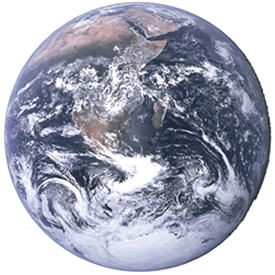



|
What Isn't World Peace? At the very least, no countries would be involved in war with each other, or internally as factional conflicts. If we were even more idealistic, we would want our version of world peace to be completely devoid of physical violence or the threat of physical violence. Terrorism, homicides, assaults, theft are all excluded from our version of world peace. Let us go further: let's exclude any action or threat that forces someone to do what they wouldn't want to do of their own volition. No larger countries will invade smaller countries. An alleyway thug would not rob a passerby with the threat of using a gun or a knife. Not even schoolyard bullies would take lunch money from their schoolmates. Nothing of force or coercion to involuntary induce a person to act against his own peaceful self-interest would exist in this picture of world peace. While we are at it, let's even exclude deception, fraud and corruption from our picture-perfect edition of world peace. Nobody likes to be lied to when being influenced by another. Enron and other large companies have caused billions if not trillions of dollars in losses, and ruined lives because they were not honest. Honesty, spoken with kind words, will only exist in our definition of world peace. Since we can define this version of world peace to be anything we want, let's include people keeping their promises--whether related to business, friendship, marriage--whatever. People would do their best to honor their word and keep their commitments. (This of course excludes promises made under duress. Duress doesn't fit into our version of world peace.) And to top it all off, unkind speech or actions won't be allowed. We only speak warm, uplifting words to our fellow human beings. We would all follow the Golden Rule and treat others with respect and kindness just like we would like to be treated. To sum up so far, here is a list that describes what our view of what world peace would not consist of: 1. No wars between countries What Is World Peace? To further broaden our definition, let's include some positives. Some of the things that we would like to see: Relations between countries would be cordial and mutually supportive, with free and fair trade between them. Relations between groups within countries would be friendly with disagreements being settled respectfully between the parties, using fair and impartial courts if necessary. Appreciation and respect for other cultures, races and religions; social harmony; lack of crime; full employment; fair, inexpensive, and efficient governments; a high level of education of the populace; a high standard of living including quality health care; and compassion for animals would exist throughout the world. What Are The Causes Of Non-World-Peace? We've just described a very idealistic vision of a world at peace. Perhaps this state of affairs has never existed on our planet previously. Nevertheless, what are the causes that disallow such a utopian state of affairs? Let's start with wars between countries. This is fairly easy to explain. One country wants what another has, and believes that by using force it can be obtained. The object of desire might be oil, land, or dominion over the victim country's people and way of life. Another cause of war would be a preemptive strike due to the expectation of an imminent attack by an aggressor. There may other causes of war as well, but they probably fall in the same categories as these. What Are The Effects Of Non-World-Peace? A rigorous microeconomic examination would show that even though the aggressor might gain some advantage, the "total utility" after the aggressive act will be worse than before it began. In other words, war is a net destroyer of economic wealth--besides destroying property and social harmony. For example, if one country bombs another's bridges, roads and other transportation infrastructure, economic activity will be reduced until the infrastructure is rebuilt. Similar arguments can be made about other forms of non-peace. For instance, one person stealing from another reduces the total wealth of the parties. A victim will naturally incur a cost to prevent similar occurances in the future, reducing real wealth. Non-world-peace is entropic, while peace is synergistic and creates more wealth and happiness. There is also a school of thought that states that the effects of an action reflect back to the actor. Examples for this are: "As you sow, so shall you reap"; "For every action there is an equal and opposite reaction"; "An eye for an eye, a tooth for a tooth."; "What goes around, comes around." So, not only does non-peace destroy wealth for the affected group, the effects of negative actions will eventually find their way back to the initiator of those actions. If Non-Peace is Damaging, Why Would Anyone Instigate It? One answer would be lack of knowledge. If someone doesn't realize that their action will have net negative consequences, then they won't be dissuaded from that action. "Ignorance of the law is no excuse." Whether we realize it or not, damaging actions have damaging consequences. Knowledge of what will happen if we perform a certain action would be very useful in making a decision about that action. Related to knowledge is awareness. If we haven't gotten enough sleep the previous night, or our senses are dulled by alcohol or drugs, we are apt to make decisions and actions that could very well be deleterious. Perhaps we could be so bold as to state that consciousness is even more important than knowledge. We might be very knowledgeable about a situation, but if our present state of consciousness is dull we could make dangerous decisions. The Basic Requirement for World Peace Is Higher Consciousness To sum up: people or groups initiate violent action because they aren't knowledgeable and conscious about the consequences of their actions. If this is true, how would we increase the awareness of individuals, groups, and countries in order to bring about world peace? The logical solution would be use a proven, time-tested technology to bring about higher consciousness. The most researched and well-documented technique has a track record that is over 5,000 years: the Transcendental Meditation Program structured by His Holiness Maharishi Mahesh Yogi. It's not necessary to delve into the description of what "TM" is, how it works, or what the benefits are here, since there is more than adequate discussion elsewhere: http://www.TM.org/ The total amount of all of this research indicates that TM is the most thoroughly researched and effective meditation method in the world today. Some may find a seemingly obtuse 2,000 year old parable becomes clear in the light of transcendental consciousness: consciousness of being conscious, while the senses are not impinging upon this state. "It is easier for a camel to pass through the eye of a needle, than for a rich man to enter into the kingdom of heaven." In this statement are actually two different metaphors attempting to paint a picture of pure, transcendental consciousness. In that age, there was a mountain pass called "The Eye of The Needle". In order to pass through this very small passageway, the travelers' camels needed to be completely unloaded in order to squeeze through. In the second metaphor, poverty is not being advocated. Rather, in the process of experiencing the transcendental bliss of the Kingdom of Heaven, there is no experience of sensory objects. One doesn't "possess anything". The only thing one "owns" is the fullness of non-material consciousness. To take this idea of consciousness being fundamental even further, we can introduce what some have termed the "consciousness hypothesis." This idea theorizes that the most fundamental level supporting physical existence is abstract consciousness. This concept fits well with Einstein's theory of a unified field. Since our understanding of physics is not quite complete, this hypothesis also remains a work in progress. Despite a not having a complete description of, and mathematically confirmed consciousness/unified field theory, there have been multiple projects that show groups who practice TM and the TM-Sidhi programs have had a settling effect on chaotic populations: Cooling World HotspotsThese demonstrations clearly suggest that consciousness has field-like propagation and properties. Can World Peace Be Practically Achieved? Worldwide, we have spent trillions of dollars, and millions of lives supposedly to end war. Yet, we still have multiple conflagrations going on in various places of the world. History has proven that fire cannot put out fire. We have had "World Wars" to end all wars. Yet wars continue. A different factor from force or violence, needs to be introduced if world peace is to be achieved. This "second element" is the light of consciousness. Flipping on this light can dispel the darkness of violence. As of 2013, there are numerous groups that regularly meet twice a day to generate coherent consciousness. The quantity and population of these groups is growing on a daily basis. If and when the number of participants grows to about 5 to 10 times what they are currently, we will see a completely obvious transition to a state of world peace. Comments@World-Peace.info |